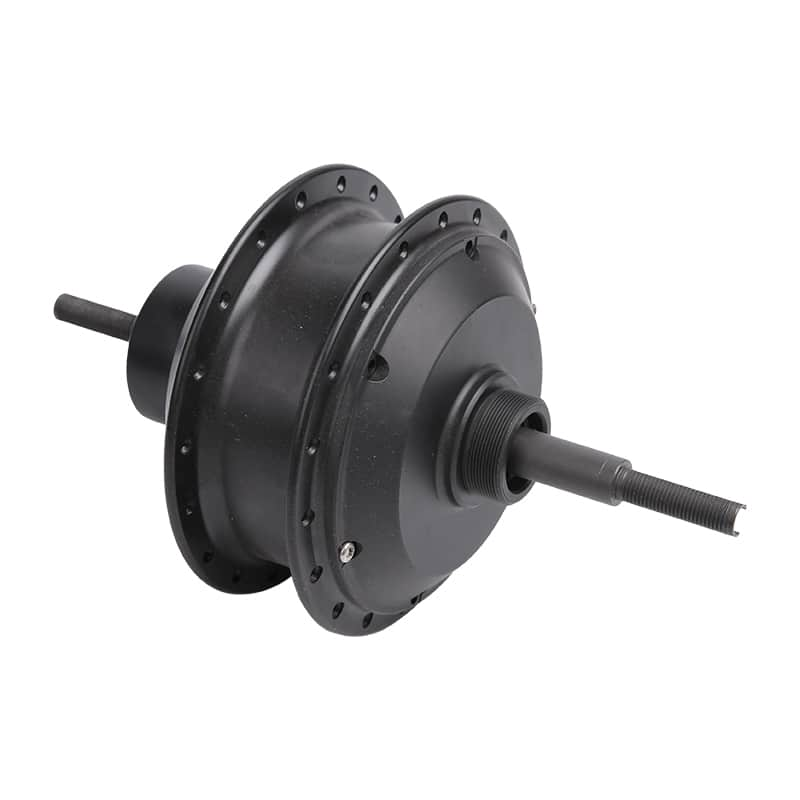Summary:Efficient performance:
Permanent magnet motors are getting a lot of attention mainly because of their typically superior performance and high efficien...
Efficient performance:
Permanent magnet motors are getting a lot of attention mainly because of their typically superior performance and high efficiency. Compared with traditional induction motors, permanent magnet motors do not require electrical excitation, but generate the magnetic field required for motor operation through the magnetic field of the permanent magnet material itself. This means that permanent magnet motors lose almost no energy when converting electrical energy, thus enabling greater efficiency in electric vehicles and other powered equipment. High-efficiency electric motors can convert the energy stored in the battery into power more efficiently, thereby increasing the range, extending battery life and reducing the operating costs of electric vehicles.
Additionally, permanent magnet motors typically perform well at low speeds and high torque, making them ideal for maneuvers such as starting, climbing hills, and accelerating electric vehicles. These characteristics contribute to excellent driving performance and make electric vehicles even more attractive.
Lightweight design:
The high power density of permanent magnet motors makes them ideal for lightweight designs. Compared with traditional motors, permanent magnet motors can provide the same or more power in a smaller size. This feature is critical for electric vehicles, as they need to accommodate batteries and electric motors in a limited space. By adopting permanent magnet motors, electric vehicle manufacturers can design more compact powertrains, thereby reducing vehicle weight, improving energy efficiency, and further increasing cruising range.
Low maintenance cost:
Permanent magnet motors generally do not require complex electrical excitation systems, so their maintenance costs are relatively low. This is an important advantage in electric vehicles and industrial applications. While traditional induction motors require regular inspection and maintenance of the electrical excitation system, permanent magnet motors are much simpler to maintain, reducing downtime and maintenance costs.
Additionally, permanent magnet motors typically have a long lifespan. Their relatively simple design reduces wear and failure of components. This reduces the frequency of replacement and repair, further reducing the total cost of ownership.
Development challenges:
Although permanent magnet motors have many advantages in performance, they also face some challenges. One of the challenges is the scarcity and environmental impact of permanent magnet materials. Mining and processing of rare earth elements (such as neodymium, praseodymium, dysprosium, etc.) commonly used in permanent magnet materials has a negative impact on the environment, and instability in the supply chain can lead to price fluctuations. Therefore, finding alternative permanent magnet materials or improving recycling and reuse technologies is crucial for the sustainability of permanent magnet motors.
Another challenge is the manufacturing technology of permanent magnet motors. Although the principle of a permanent magnet motor is relatively simple, its manufacturing process requires highly specialized skills, which may increase manufacturing costs. However, with the continuous development and maturity of manufacturing technology, the manufacturing cost is expected to decrease, making permanent magnet motors more competitive.
Competing technologies:
In addition to permanent magnet motors, there are other motor technologies that continue to evolve, such as induction motors and switched reluctance motors. These technologies may have competitive advantages in certain applications. Induction motors perform well in high-speed and high-power applications, while switched reluctance motors are suitable for some special industrial applications. Therefore, when choosing a motor technology, trade-offs and choices need to be made based on the requirements and performance needs of the specific application.
Renewable Energy Integration:
Permanent magnet motors also play a key role in renewable energy systems. For example, wind turbines often use permanent magnet synchronous generators because of their ability to provide a constant electrical power output under unstable wind speed conditions. This property is critical for the reliability and stability of renewable energy sources. Therefore, permanent magnet motors have great potential in the field of renewable energy, helping to promote the development of clean energy.
250W Lithium Electric Vehicle ATV Motor QH-S-250 Brushless DC Motor for Snow Bike


